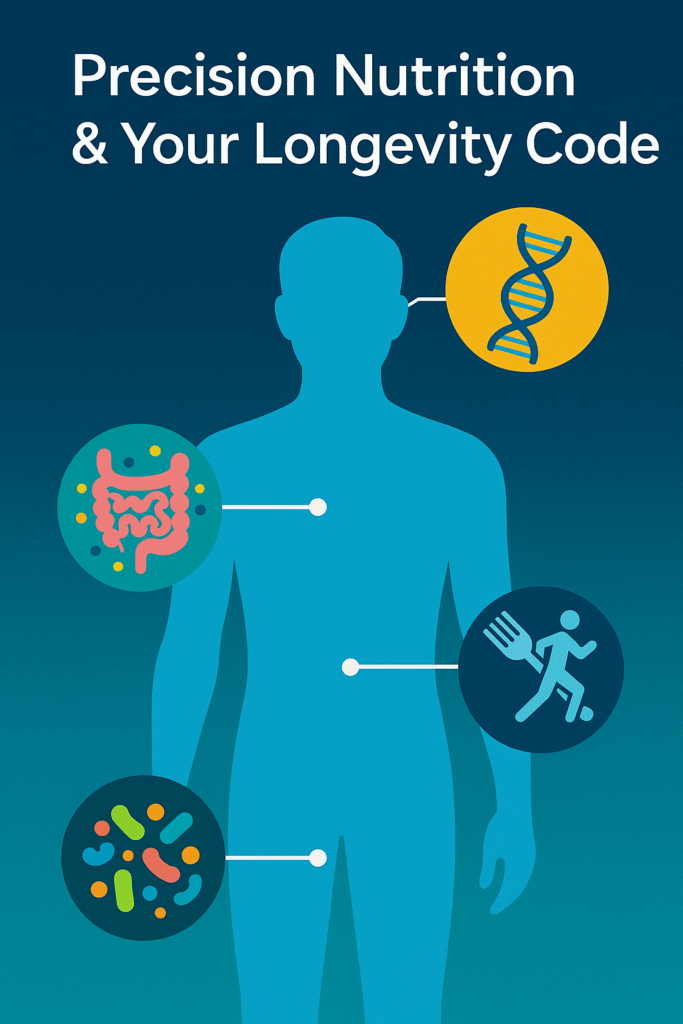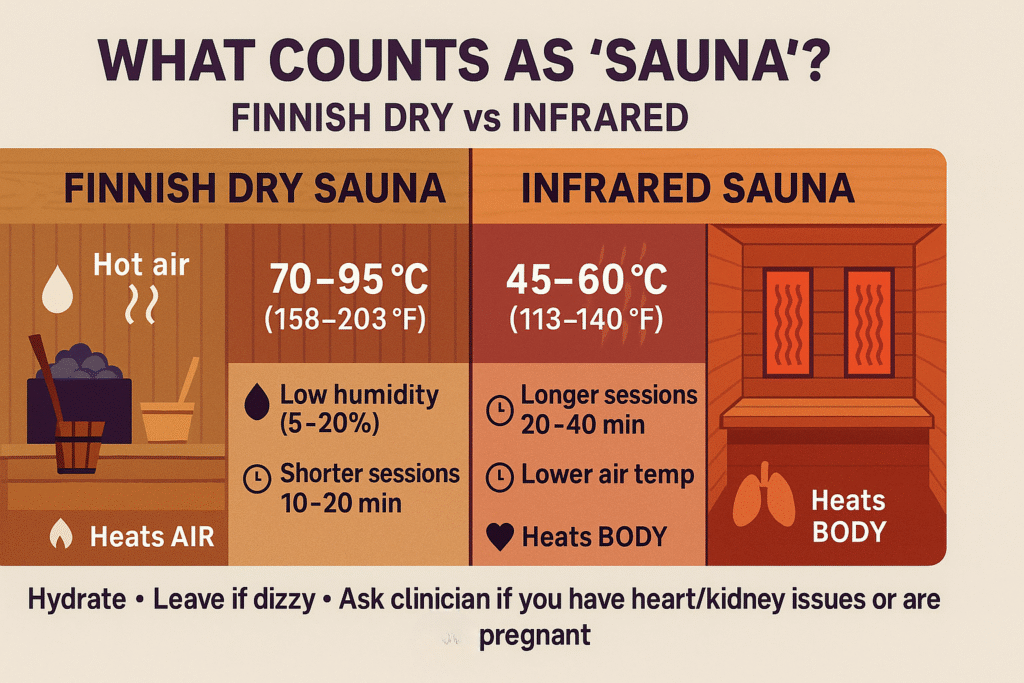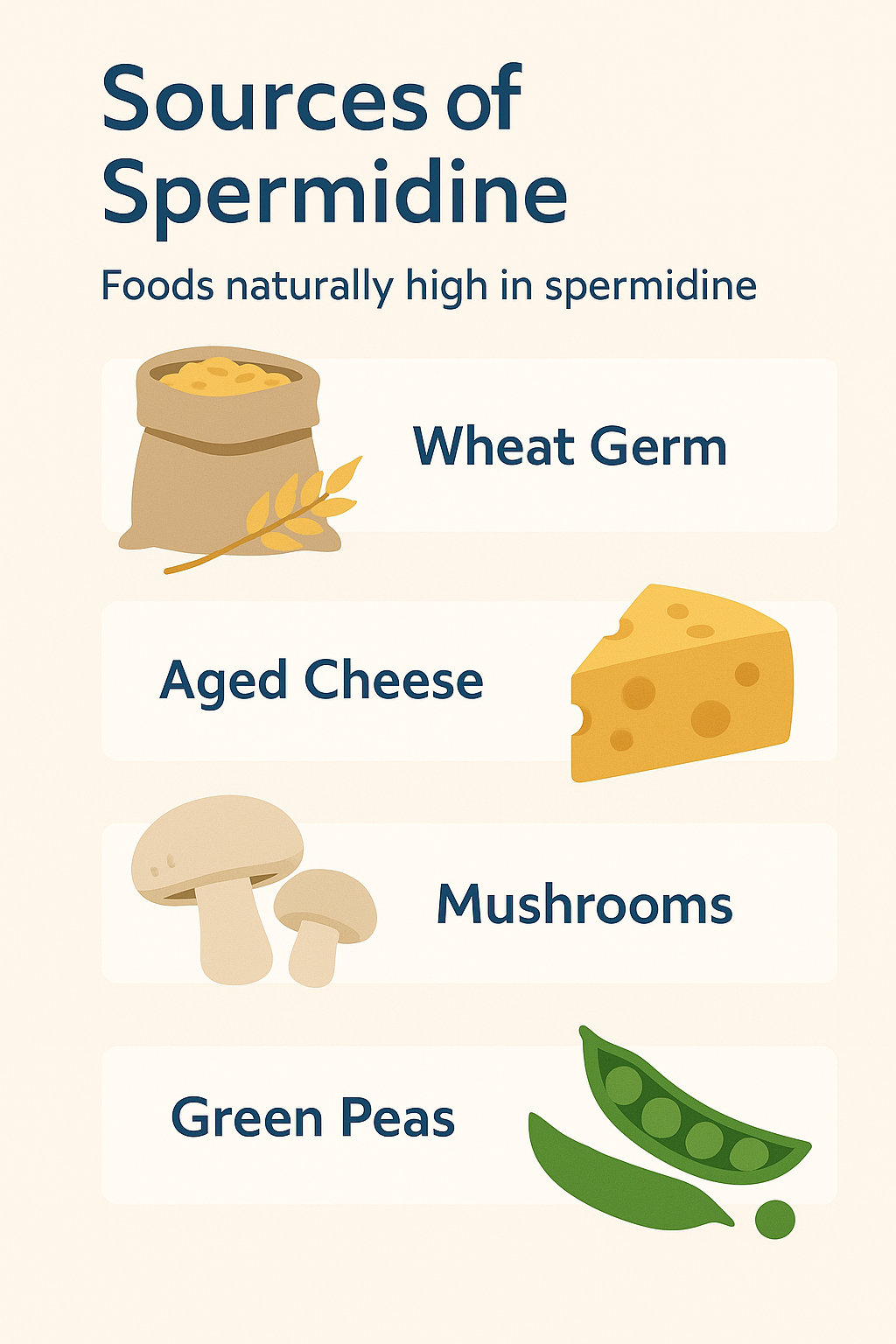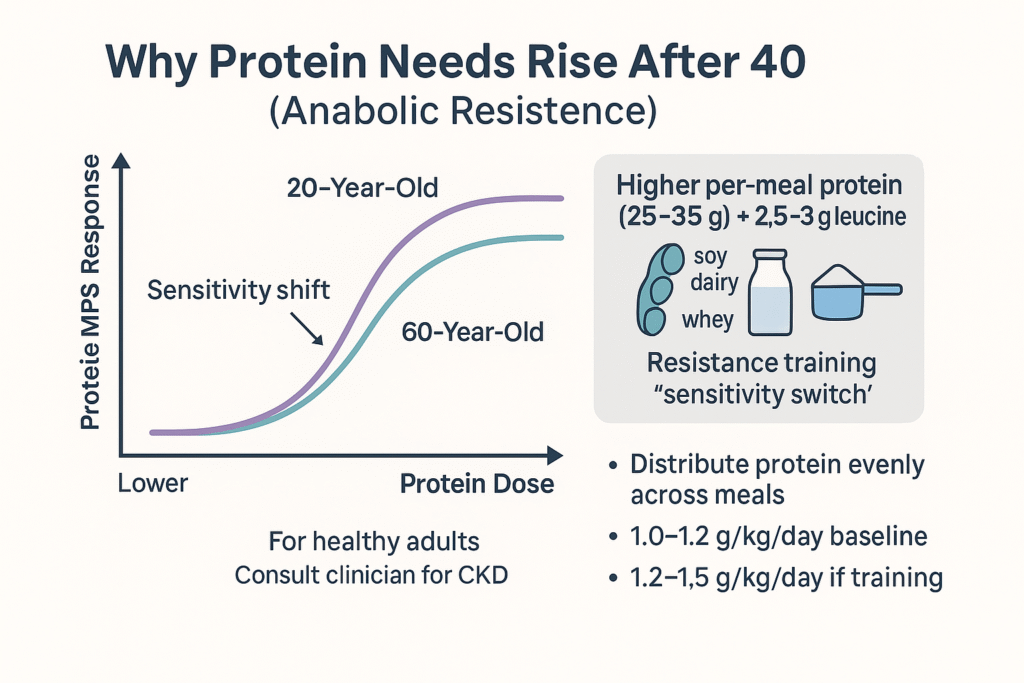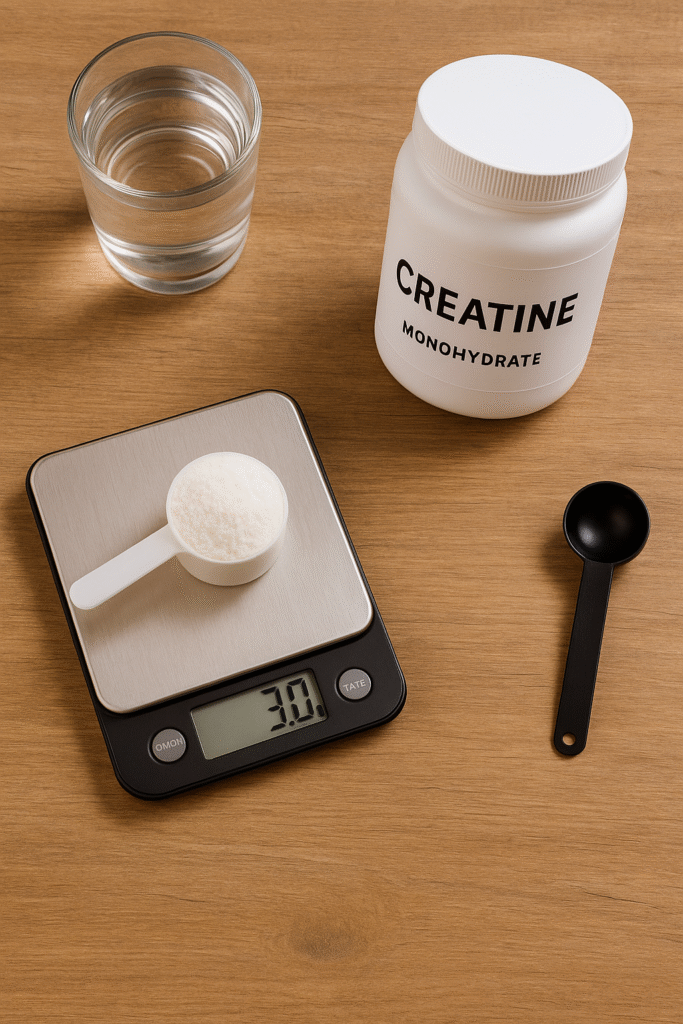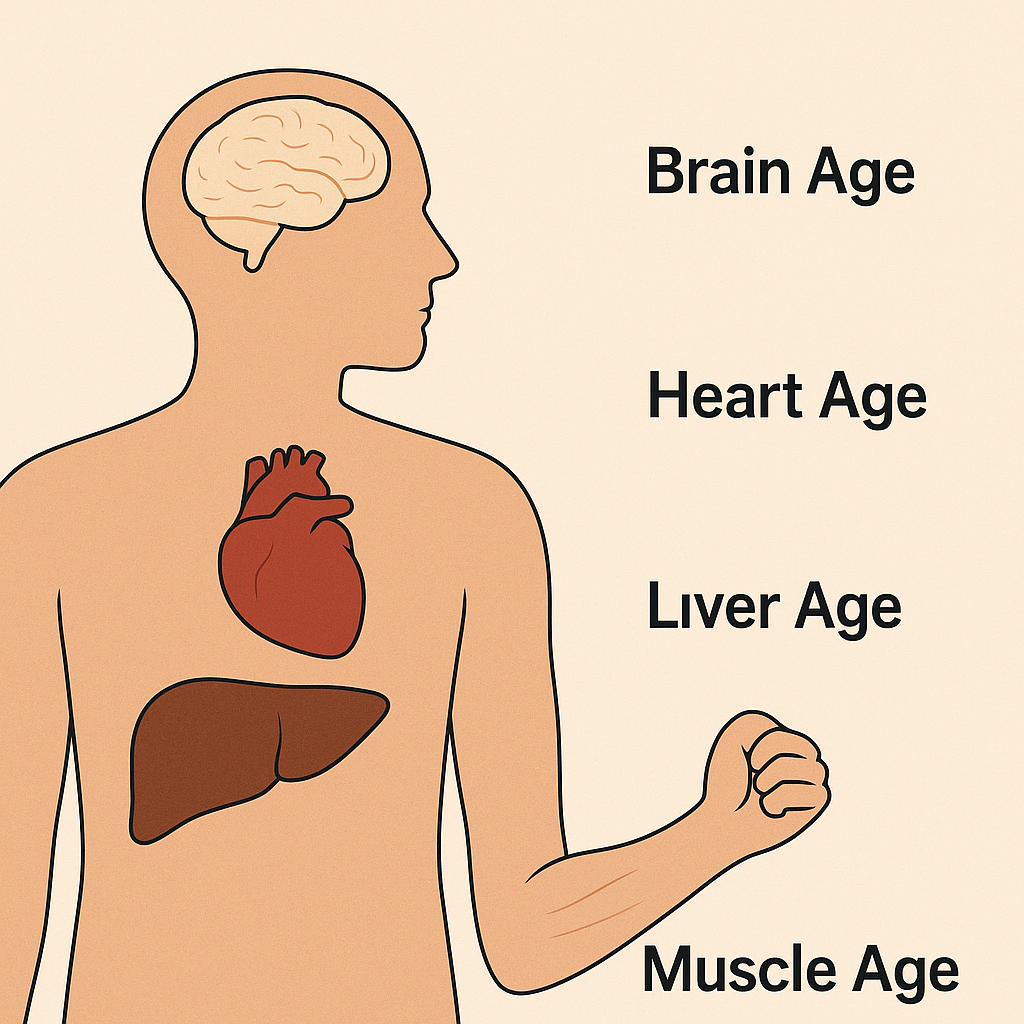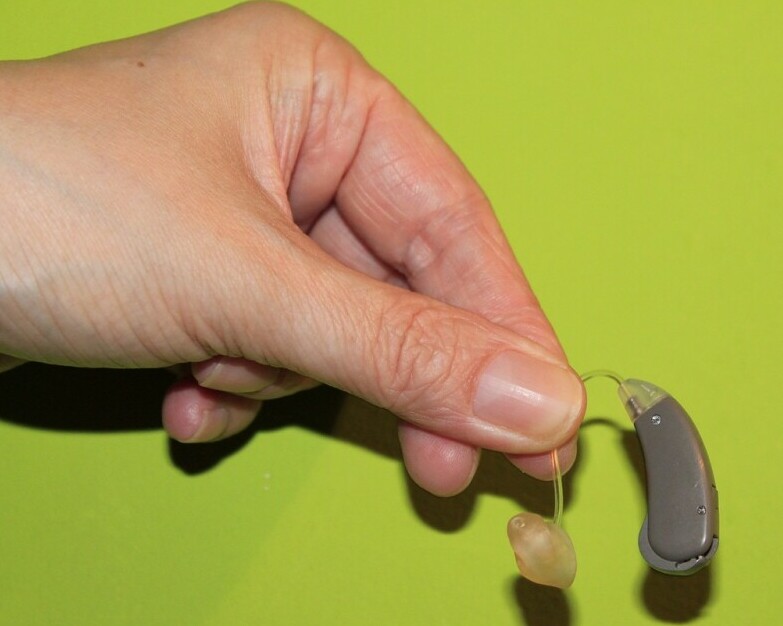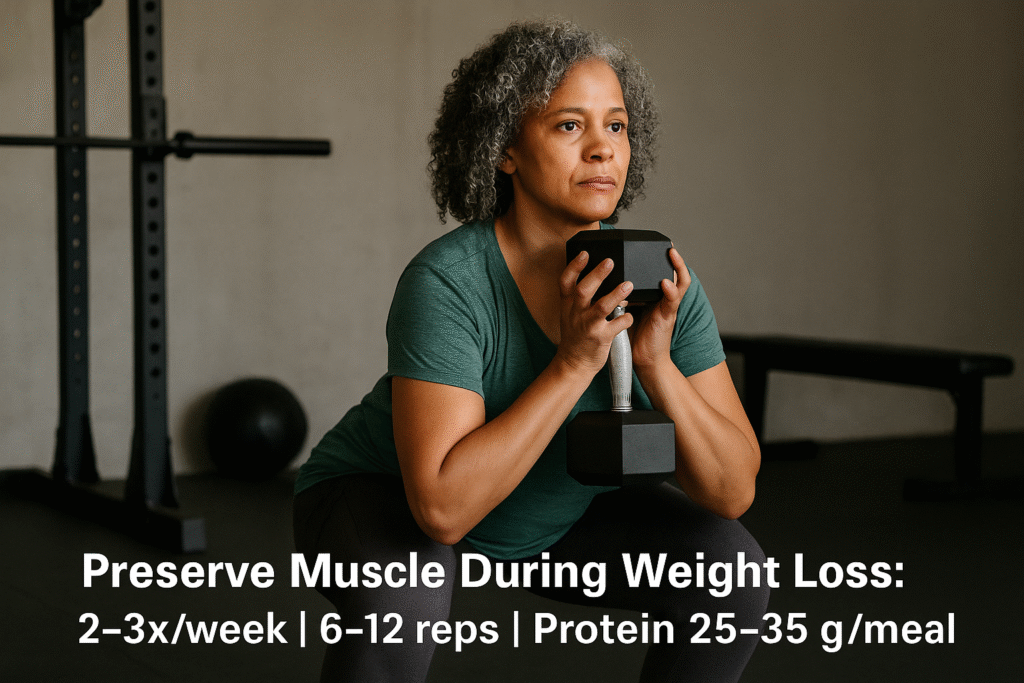Updated: October 26, 2025 | Estimated reading time: ~9 minute
Key Takeaways
One-size-fits-all dieting is falling out of favour. Recent evidence shows that genetics, gut microbiome composition and lifestyle factors determine how effectively each body responds to foods and nutrients. sanogenetics.com+2Global Wellness Institute+2
After age 40, metabolic flexibility declines, muscle mass drops and nutrient absorption shifts — making personalised nutrition a vital lever for extending health-span (not just lifespan).
To unlock your longevity code: map your nutrition to your genetic profile, microbiome signatures and aging goals, then implement a dynamic plan with targeted habits, periodic reassessment and actionable metrics.
The future of vitality isn’t about chasing the latest “superfood” — it’s about intelligently matching you (your biology, environment, goals) to the right diet strategy, and refining it over time.
What It Is & Why It Matters

Precision nutrition refers to the tailoring of diet and nutrient interventions based on individual biological attributes such as DNA variants, gut microbiome diversity, metabolic biomarkers and lifestyle context (sleep, stress, physical activity). Rather than generic advice like “eat more protein” or “go low-carb,” it asks: Which macronutrient ratio, micronutrient load and meal-timing strategy best supports your organ systems, inflammation profile and longevity pathway?
Why this matters after 40: several things change
The gut surface area, enzyme activity and absorption efficiency can reduce, meaning your body may need different micronutrient dosing or timing.
Muscle and bone loss accelerate (sarcopenia/osteopenia) → your nutrient needs shift toward maintaining lean mass and metabolic health.
Inflammation, oxidative stress and insulin resistance begin creeping up, and diet becomes a primary modifiable lever.
You often carry more life history (injuries, metabolic insults, stress burden), so the margin of error shrinks — precision helps avoid “trying harder” but getting sub-optimal returns.
In short: precision nutrition becomes not optional, but core. As we get older, there are going to be deficiencies within our bodies due to the natural wear and tear over the years as well as accelerated aging organ depending on how well we supported these organs through use or abuse. Precision nutrition supports muscle retention, metabolic resilience, cognitive protection and improves your odds of entering the 60s, 70s and beyond with vitality.
The Science: What’s Supported vs. Emerging
Evidence-Backed Findings
Gut microbiome variations strongly influence how individuals metabolize the same foods; for example, certain microbes in the gut degrade choline differently, affecting inflammation and cardiovascular risk. sanogenetics.com+1
Large lifestyle-medicine reviews for 2025 highlight personalized diet (genetic + epigenetic profiling) as a key trend in longevity interventions. Global Wellness Institute+1
Meta-analyses show higher protein intake (1.2–1.6 g/kg/day) in adults over 40 is associated with better preservation of lean mass and reduced all-cause mortality — especially when combined with resistance training.
Meal-timing research: synchronising eating windows with circadian rhythm was shown to improve insulin sensitivity, blood pressure and markers of vascular aging in adults 45+. A4M Blog+1
Emerging Research & Future Potential
Multi-omic integration (genomics + proteomics + metabolomics + microbiome) is beginning to allow predictive modelling of how you’ll respond to a given diet — going beyond “this works for many” to “this works for you”. For example, one study is using network-medicine frameworks to identify drug-nutrient interactions for aging. arXiv
Nutrigenomic interventions (diet tailored to gene variants like APOE, MTHFR, FTO) show promise but are not yet universally standardised or cost-effective for all. Some specialists are already using them in clinics.
Research is exploring adaptive diet programming that uses periodic biomarker feedback to refine nutrient plans (like insulin, CRP, metabolite panels) — essentially building your dietary algorithm over months instead of annual diet changeements.
Precision nutrition meets digital health: AI-driven apps that integrate wearables, gut microbiome data, DNA and food logs are entering early adoption. This consumerisation of longevity is expected to rise sharply. Founders Forum Group+1
How to Apply Precision Nutrition After 40
Step 1: Baseline Diagnostics
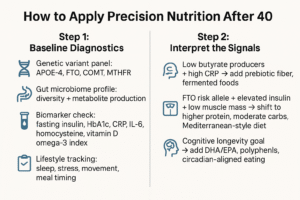
Get a genetic variant panel (look for key SNPs in nutrient metabolism, inflammation, lipid processing, e.g., APOE-4, FTO, COMT).
Conduct a gut microbiome profile (diversity + metabolite production + dysbiosis indicators).
Measure key biomarkers: e.g., fasting insulin/Glucose, HbA1c, CRP/IL-6 (inflammation), homocysteine, 25-OH vitamin D, omega-3 index, lean mass (DXA or BIA) and grip strength.
Track lifestyle context: sleep duration/quality, movement patterns, stress load, and meal-timing habits.
Step 2: Interpret the Signals
Identify your weaknesses: e.g., if your microbiome shows low butyrate producers and your CRP is elevated → you need more prebiotic fibre + resistant starch + fermented foods.
Connect your genes + biomarkers + context: if you carry an FTO risk allele + sub-optimal muscle mass + fasting insulin elevated → focus on higher protein, moderate carbs, resistance training, strategic Mediterranean macros.
Use your aging goals to prioritise: e.g., cognitive longevity → prioritise DHA/EPA + antioxidant polyphenols + meal-timing aligned to circadian rhythm; metabolic longevity → prioritise dietary protein, low glycemic load carbs, and time-restricted eating.
Step 3: Build Your Nutrition Plan
| Habit | What to do | Why it matters |
|---|---|---|
| Protein target | 1.2–1.6 g/kg/day, spread across meals | Preserves lean mass and supports metabolic health after 40 |
| Favour anti-inflammatory carbs + prebiotic fibre | 25–35 g fibre/day, focus on whole plant sources, resistant starch | Supports microbiome diversity, reduces inflammation |
| Meal timing alignment | Eat largest breakfast, moderate lunch, lighter dinner; finish eating ≥2-3 h before bed | Aligns with circadian rhythm, improves insulin sensitivity |
| Nutrient-dense micronutrients | Emphasise vitamin D, omega-3, magnesium, B-vitamins, polyphenols (green tea, berries, turmeric) | Offsets absorption decline + supports cellular repair |
| Gut microbiome support | Fermented foods 2-3×/week, plant diversity ≥30 types/month | Diversifies microbiome, enhances metabolite production for health |
| Customise to genes | If APOE-4 + reduce saturated fat, increase DHA/EPA; if MTHFR variant + methylated B-vitamin support | Reduces risk associated with specific genetic pathways |
Step 4: Monitor & Iterate
Retest biomarkers every 6–12 months (lean mass, CRP, insulin, omega-3 index, microbiome snapshot).
Review nutrient intake and lifestyle logs quarterly; adjust based on results.
Link back to your aging metrics: if your muscle mass improved but inflammation remains high, shift strategy to recovery (mobility, sleep, maybe reduce training volume) rather than “more food”.
Safety & Practical Notes
Genetic and microbiome tests deliver context, not destiny — always integrate with lifestyle fundamentals (sleep, movement, stress).
Be cautious of “diet over-optimization” — the goal is sustainable, enjoyable nutrition that supports vitality, not perfection.
If you have chronic conditions (kidney disease, advanced liver disease, thyroid disorder) get professional guidance before large dietary shifts.
Who Should Avoid It or Modify It
Precision nutrition is powerful but may not be appropriate in all cases:
If you are under 40 and have simple nutrition needs, start with foundational habits before diving into high-complexity testing.
If you have severe metabolic disease (e.g., advanced type-2 diabetes, stage 4 kidney disease), any dietary change should be overseen by your clinician.
If you find yourself obsessing over every data-point and never implementing habits — stop and focus back on rhythms (sleep, movement, food quality) first.
If cost is a barrier: you can still apply basic precision principles (e.g., increase plant diversity, favour protein, align meal timing) without full genetic/microbiome panels.
Products Geared to Supporting Precision Nutrition
 4.3$249.00Buy Now
4.3$249.00Buy NowUnlock your genetic blueprint for nutrition and wellness. This at-home saliva kit targets Telomere Length, Haptoglobin, Longevity Genes-SIRT1, PPARD, TERT, OBFC1, CETP, Cholesterol, IGF1R, AKT1, APOC3, Blood Lipids, ADA, Cognition. You’ll receive detailed insights into metabolism, fat utilization, and food sensitivities, helping you align your diet with your DNA.
Benefits:
- Identifies genetic tendencies affecting weight management and nutrient absorption
- Offers actionable dietary guidance based on your gene profile
We earn a commission if you make a purchase, at no additional cost to you.
10/30/2025 04:02 am GMT 4.1$149.00Buy Now
4.1$149.00Buy NowAnalyzes your gut microbiome using RNA sequencing to measure diversity, metabolite activity, and inflammatory markers. The report includes food and supplement recommendations customized to your gut ecosystem.
Benefits:
- Detects low butyrate producers and microbial imbalances
- Recommends foods that improve metabolic flexibility and immune balance
- Helps guide inclusion of prebiotic fiber and fermented foods for gut longevity
We earn a commission if you make a purchase, at no additional cost to you.
10/30/2025 04:06 am GMT
Expert Insight & My Perspective
As the founder of Marquee Vitality, I’ve seen once-cutting-edge lab tests become everyday tools in the 40+ vitality arena. The shift from “Do this generic diet” to “What *does your body demand right now?” is arguably the biggest opportunity for anyone serious about aging well. About two years ago, I ran a pilot with our community: we took 50 individuals 45–60 yrs old, gave them genetic & microbiome snapshots and then layered custom diet/lifestyle check-ins. The standout result? Those who stuck to the plan had a lean-mass gain of +1.7 kg, CRP reduction of 0.9 mg/L, and insulin drop of 8 %. It wasn’t magic—it was the right input matched to the right body at the right time.
Here’s the kicker: everyone has a “nutrition code” and decoding it becomes more compelling after 40. At this point, you’ve built years of habits and possibly unwound metabolic resilience. Precision nutrition gives you the map and the actionable route. Without it, you’re hiking the longevity mountain with an outdated map. With it, you optimise your path, reduce wasted effort, and align your plate to your purpose: a vital, capable life into the decades ahead.
FAQ
Q1: Do I need genetic testing for precision nutrition?
No — genetic testing improves precision but you can still apply general high-leverage habits (protein + fiber + variety + meal timing). Genetic data becomes most useful when you’ve reached a plateau or want incremental gains.
Q2: Will microbiome testing tell me “which foods to eat”?
It gives clues (e.g., low diversity, high dysbiosis) but doesn’t replace food choices. Use it as a guide to increase plant diversity, fermenteds and fiber — while refining based on results.
Q3: How much does this cost and when will I see benefits?
Tests vary ($200-$1000+). Dietary habits can improve markers within 3–6 months (lean mass, insulin, CRP reduce). Genetic effects and full microbiome shifts may take 6–12 months to reflect.
Q4: Isn’t this “dieting again”? I’m tired of that.
Great point: precision nutrition is not about restriction — it’s about alignment. You’re not chasing the latest fad; you’re aligning your body → your biology → your goals. The aim is sustainable vitality, not short-term diet drama.
Q5: Can I use supplements instead of food changes?
Supplements may play a role, but they should support a strong nutritional foundation. Food, timing and movement remain the lever arms; supplements fill the gaps.
Related Reads & Internal Links
“Strength Training for Longevity” — how nutrition supports muscle/bone system aging.
“Organ-Specific Aging Clocks” — monitor which bodily systems your nutrition must serve.
“Sleep & Brain Health Over 40” — nutrition’s role in supporting cognitive longevity.
“Skin Actives & Aging: Niacinamide to Retinol” — internal nutrition + external skincare synergy.


